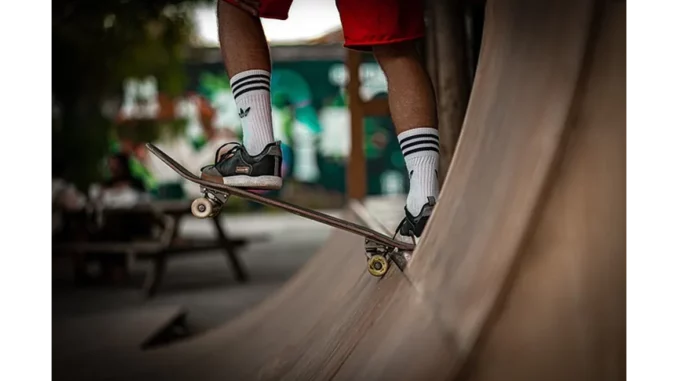
The Richard Dunn Sports Centre in Bradford, once a bustling hub of athletic activity, has remained empty for nearly five years, serving as a stark reminder of the city’s evolving landscape. An ambitious proposal by the Twentieth Century Society aims to breathe new life into this historic building by transforming it into the UK’s only Olympic-level skate arena. To explore this intriguing vision, I had the opportunity to speak with Catherine Croft, Director of the Twentieth Century Society, whose insights illuminate how this transformation could elevate Bradford’s profile in the world of action sports.
Successful low-energy building design hinges on careful planning. Focus360 Energy can help.
Catherine Croft’s zeal for the project is palpable. As she outlines the proposed plans for the Richard Dunn Centre, her enthusiasm is infectious. “This building is more than just a relic of the past,” she asserts. “It’s a part of Bradford’s heritage. We see a chance to preserve this while giving it a new, vibrant purpose.” The proposal, developed in partnership with Ian Chalk Architects, aims to repurpose spaces that once housed leisure pools and sports halls into a multifaceted facility, featuring a 555sqm concrete bowl for park-style skating and a 1,475sqm street-style arena. “Imagine the energy of young athletes practising and competing under this iconic roof,” Catherine muses, painting a vivid picture of the centre’s potential.
One of the most compelling aspects of this proposal is its ambition to address a national shortfall. “The UK currently lacks a permanent Olympic-level skate arena,” Catherine explains. “We have world-class athletes, but no world-class facilities for them to train in. This is a chance for Bradford to lead by example.” Neil Ellis from Skateboard GB, a prominent figure in the skateboarding community, echoes this sentiment. “The Richard Dunn Centre proposal is very exciting,” he remarks. “It would not only benefit British skateboarders aiming to compete internationally but also provide an incredible facility for the local community.” This vision transcends mere preservation; it aims to nurture talent and foster a sporting culture that could place Bradford on the global map.
However, every grand plan comes with its set of challenges. Catherine candidly acknowledges that “funding remains the biggest hurdle.” The proposal is still in its early stages, with no clear financial backing. Yet, she remains optimistic. “With City of Culture 2025 on the horizon, there’s a real buzz around Bradford. This is the perfect time to rally support and make this dream a reality.” Si Cunningham, Chair of the Bradford Civic Society, offers a balanced perspective. “This is a really imaginative proposal,” he says. “However, it’s not immediately obvious how such an ambitious scheme could be funded in the current climate.” Despite his cautious outlook, he admits that the idea has merit. “A national skate facility based in Bradford makes a lot of sense. It’s an excellent idea and could be an awesome scheme if realised.”
A standout element of Catherine’s narrative is the community-centric approach of the proposal. “This is not just about building a skate park,” she emphasises. “We’re talking about creating a versatile multi-use facility that includes climbing walls, a café, and studio suites. It’s about offering young people opportunity and fulfilment through sport.” The community’s enthusiasm is evident. When the Telegraph & Argus surveyed Bradford residents about the building’s future, a skate park emerged as the most popular response. “People are excited about this,” Catherine notes. “They see the potential for something unique and beneficial for the entire city.”
Sustainability is another cornerstone of the proposal. “Reusing existing structures is one of the most environmentally responsible ways to develop,” Catherine points out. “We’re not just preserving an iconic building; we’re doing it in a way that’s respectful to the environment.” The plans include innovative designs that adapt the existing spaces to new uses, maintaining the architectural integrity of the building while giving it a modern twist. “It’s about blending the old with the new,” Catherine says. “Respecting the past while creating something for the future.”
As I concluded my conversation with Catherine, the excitement about the future of the Richard Dunn Centre was undeniable. This proposal is more than just a plan to repurpose an old building; it’s a vision that encompasses community, sustainability, and sporting excellence. If realised, it could indeed provide Bradford with an Olympic-class sports facility that inspires and nurtures the next generation of athletes.
The journey from proposal to reality may be fraught with challenges, but with the passion and dedication of individuals like Catherine Croft and organisations like the Twentieth Century Society, it’s a journey worth undertaking. Bradford stands on the brink of an exciting new chapter, one that could see it leading the way in action sports and community development.


Be the first to comment